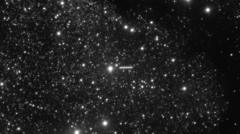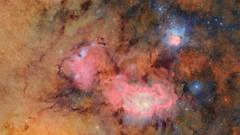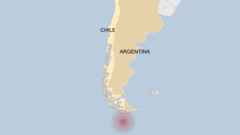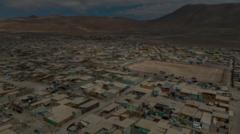A newly identified interstellar object, dubbed 3I/ATLAS, could potentially be the oldest known comet, with estimates suggesting it dates back over seven billion years. This intriguing finding was revealed by researchers from Oxford University during a presentation at the UK's Royal Astronomical Society's national meeting held in Durham.
Spotted by the ATLAS survey telescope in Chile on July 1, 2025, while it was approximately 670 million kilometers from the Sun, 3I/ATLAS marks only the third instance of an object originating from outside our solar system being detected. The excitement surrounding this discovery has captured the attention of astronomer Matthew Hopkins, who noted that it may be more than three billion years older than the solar system itself.
Hopkins indicated that the object likely hails from the 'thick disk' of the Milky Way, a region inhabited by ancient stars, and suggested that it consists largely of water ice. As 3I/ATLAS approaches the Sun later this year, heating will occur on its surface. This interaction is expected to produce jets of vapor and dust, potentially forming a magnificent tail that could be visible from Earth, using amateur telescopes.
Professor Chris Lintott, a co-author of the study, emphasized the novelty of this observation by stating, "This is an object from a part of the galaxy we've never seen up close before." The researchers are optimistic, estimating a two-thirds chance that this comet is indeed older than our solar system, having floated through interstellar space for eons.
Before the emergence of 3I/ATLAS, only two other interstellar objects had been recorded: 1I/'Oumuamua in 2017 and 2I/Borisov in 2019. The astronomical community is on the verge of further discoveries as the Vera C Rubin telescope in Chile, designed to survey the southern night sky comprehensively, is set to begin operations later this year. Scientists anticipate that this powerful new tool could uncover between five to fifty additional interstellar objects.


















